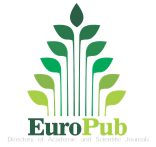Rare Cause of Organic Hypoglycaemia: Association of Nesidioblastosis, Focal Nesidiodysplasia and Multiple Pancreatic Micro-Adenomas
DOI:
https://doi.org/10.55677/IJCSMR/V4I8-05/2024Keywords:
Nesidioblastosis; hyperinsulinism; hypoglycemia; diazoxide; lanreotide.Abstract
The etiological diagnosis of hypoglycemia in the non-diabetic patient is complex and includes a variety of diseases, including endogenous hyperinsulinism caused by functional β-cell disorders, the latter also known as nesidioblastosis or non-insulinoma pancreatogenic hypoglycemia syndrome (NIPHS). We report the case of a 62-year-old patient, not known to be diabetic, hypertensive on triple therapy, presenting with hypoglycemic episodes reaching 0.34 g/l for 2 years. Biological tests showed insulinemia at 676 pmol/l (norms 18-173pmol/l), C-peptide at 2980 pmol/l (norms 300-1400pmol/l). An octreoscan revealed a focus of radiotracer fixation in the head of the pancreas. The patient underwent 2 operations with persistent hypoglycemia; the combination of diasoxide 300mg/d and lanreotide 120mg/3 weeks led to the disappearance of hypoglycemia and a favorable outcome.
References
Jabri AL, Bayard C. Nesidioblastosis associated with hyperinsulinemic hypoglycemia in adults: review of the literature. Eur J Intern Med 2004; 15:407–410.doi: S0953-6205(04)00194-3.
Andreas Raffel 1, Markus Krausch M, Martin Anlauf, Daniel Wieben, Stefan Braunstein, Günter Klöppel, Hans-Dietrich Röher, Wolfram Trudo Knoefel Diffuse nesidioblastosis as a cause of hyperinsulinemic hypoglycemia in adults: a diagnostic and therapeutic challenge Feb;141(2):179-84; discussion 185-6. doi: 10.1016/j.surg.2006.04.015.
Davi MV, Pia A, Guarnotta V, Pizza G, Colao A, Faggiano A; NIKE Group. The treatment of hyperinsulinemic hypoglycaemia in adults: an update. J Endocrinol Invest. 2017 Jan; 40(1):9-20. doi: 10.1007/s40618-016-0536-3. Epub 2016 Sep 13. PMID: 27624297.
Babińska A, Jaśkiewicz K, Karaszewski B, Łukiański M, Sworczak K. Nesidioblastosis--a rare cause of hypoglycaemia in adults. Exp Clin Endocrinol Diabetes. 2005 Jun;113 (6):350-3. doi: 10.1055/s-2005-865599. PMID: 15977104.
.Laidlaw GF. Nesidioblastoma, the islet tumor of the pancreas. Am J Pathol. 1938 Mar;14(2):125-134.5. PMID: 19970380; PMCID: PMC1964945.
Kaczirek K, Niederle B. Nesidioblastosis: an old term and a new understanding. World J Surg. 2004 Dec; 28(12):1227-30. doi: 10.1007/s00268-004-7598-7. Epub 2004 Nov 4. PMID: 15517495.
Fuller, P.J.; Ehrlich, A.R.; Susil, B.; Zeimer, H. Insulin Gene Expression in Adult-Onset Nesidioblastosis. Clin. Endocrinol. 1997, 47, 245–250.
.Stefanini, P.; Carboni, M.; Patrassi, N.; Basoli, A. Hypoglycemia and Insular Hyperplasia. Review of 148 Cases. Ann. Surg. 1974, 180, 130–135
. Cryer, P.E.; Axelrod, L.; Grossman, A.B.; Heller, S.R.; Montori, V.M.; Seaquist, E.R.; Service, F.J. Evaluation and Management of Adult Hypoglycemic Disorders: An Endocrine Society Clinical Practice Guideline. J. Clin. Endocrinol. Metab.2009, 94, 709–728.
Galizia, A.C.; Fava, S.; Foale, R. Nesidioblastosis-Associated Hypoglycaemia Presenting with Prominent Cardiac Manifestations. Postgrad. Med. J. 1996, 72, 231–232.
Dieterle MP, Husari A, Prozmann SN, Wiethoff H, Stenzinger A, Röhrich M, Pfeiffer U, Kießling WR, Engel H, Sourij H, Steinberg T, Tomakidi P, Kopf S, Szendroedi J. Diffuse, Adult-Onset Nesidioblastosis/Non-Insulinoma Pancreatogenous Hypoglycemia Syndrome (NIPHS): Review of the Literature of a Rare Cause of Hyperinsulinemic Hypoglycemia. Biomedicines. 2023 Jun 16;11(6):1732. doi: 10.3390/biomedicines11061732. PMID: 37371827; PMCID: PMC10296556.
Van der Wal, B.C.H.; De Krijger, R.R.; De Herder, W.W.; Kwekkeboom, D.J.; Van der Ham, F.; Bonjer, H.J.; Van Eijck, C.H.J. Adult Hyperinsulinemic Hypoglycemia Not Caused by an Insulinoma: A Report of Two Cases. Virchows Arch. 2000, 436, 481–486. [CrossRef]
Kauhanen, S.; Seppänen, M.; Minn, H.; Gullichsen, R.; Salonen, A.; Alanen, K.; Parkkola, R.; Solin, O.; Bergman, J.; Sane, T.; et al. Fluorine-18-L-Dihydroxyphenylalanine (18F-DOPA) Positron Emission Tomography as a Tool to Localize an Insulinoma or β-Cell Hyperplasia in Adult Patients. J. Clin. Endocrinol. Metab. 2007, 92, 1237–1244. [CrossRef]
.Ahluwalia, N.; Attia, R.; Green, A.; Cane, P.; Routledge, T. Doege-Potter Syndrome. Ann. R. Coll. Surg. Engl. 2015, 97, e105–e107. [CrossRef]
Kandaswamy, L.; Raghavan, R.; Pappachan, J.M. Spontaneous Hypoglycemia: Diagnostic Evaluation and Management. Endocrine 2016, 53, 47–57. [CrossRef]
. Witteles R.M., Straus F.H., Sugg S.L., Koka M.R., Costa E.A., Kaplan E.L. Adult-Onset Nesidioblastosis Causing Hypoglycemia. Arch. Surg. 2001;136:656–663. doi: 10.1001/archsurg.136.6.656. [PubMed] [CrossRef] [Google Scholar] [Ref list]
Guseva N., Phillips D., Mordes J.P. Successful Treatment of Persistent Hyperinsulinemic Hypoglycemia with Nifedipine in an Adult Patient. Endocr. Pract. 2010;16:107–111. doi: 10.4158/EP09110.CRR [PubMed] [CrossRef] [Google Scholar] [Ref list]
Mozell E.J., Woltering E.A., O’Dorisio T.M., Phillipson B.E., Fletcher J., Fletcher W.S., Howe B., Hill D., Rhea D. Adult Onset Nesidioblastosis: Response of Glucose, Insulin, and Secondary Peptides to Therapy with Sandostatin. Am. J. Gastroenterol. 1990;85:181–188. [PubMed] [Google Scholar] [Ref list]
Schwetz V., Horvath K., Kump P., Lackner C., Perren A., Forrer F., Pieber T.R., Treiber G., Sourij H., Mader J.K. Successful Medical Treatment of Adult Nesidioblastosis with Pasireotide over 3 Years. Medicine. 2016;95:e3272. doi: 10.1097/MD.00000000000032 [PubMed] [CrossRef] [Google Scholar] [Ref list]
Dravecka I, Lazurova I. Nesidioblastosis in adults. Neoplasma. 2014;61:252-256.
Downloads
Published
How to Cite
Issue
Section
License
Copyright (c) 2024 International Journal of Clinical Science and Medical Research

This work is licensed under a Creative Commons Attribution 4.0 International License.











